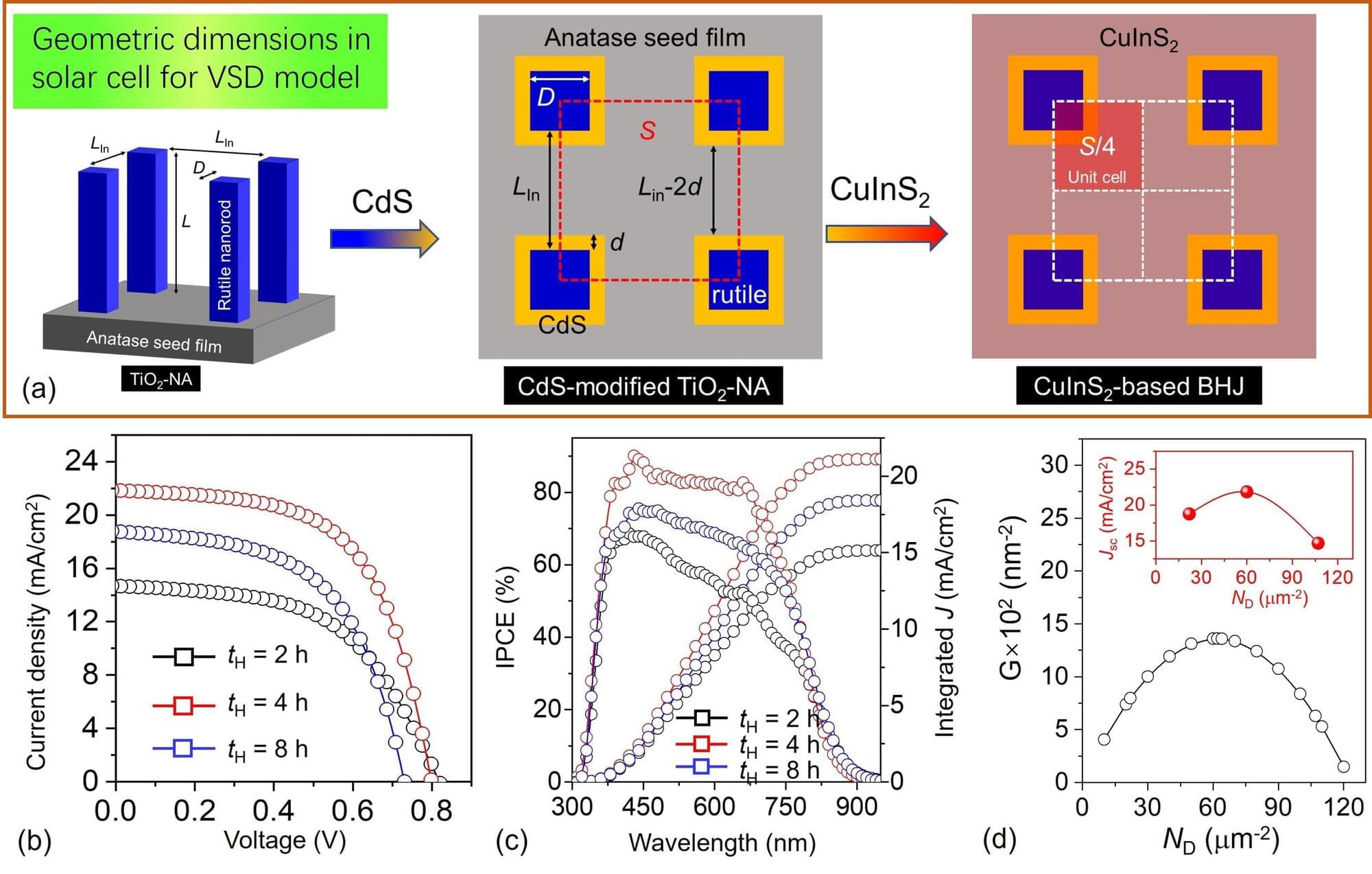A research team led by Prof. Wang Mingtai at the Hefei Institutes of Physical Science of the Chinese Academy of Sciences has developed a finely tuned method for growing titanium dioxide nanorod arrays (TiO2-NA) with controllable spacing without changing individual rod size and demonstrated its application in high-performance solar cells.
Their findings, published in Small Methods, offer a new toolkit for crafting nanostructures across clean energy and optoelectronics.
Single-crystalline TiO2 nanorods excel at harvesting light and conducting charge, making them ideal for solar cells, photocatalysts, and sensors. However, traditional fabrication methods link rod density, diameter, and length—if one parameter is adjusted, the others shift accordingly, often affecting device efficiency.
